Islam came to Malaysia in the Middle Ages, brought by Arabian and Indian traders. This long history can be found everywhere in KL, in its culture and architecture. We felt that we hadn’t really seen the city until we’d visited a few of the sights which reflect this Islamic heritage.
The Jamek mosque, or Masjid Jamek Sultan Abdul Samad to give it its proper name, lies at the heart of KL, near to the central Merdeka Square. It was built in 1909 to plans by a British architect, who also designed KL’s dramatic railway station, with its Moorish minarets and staircases.
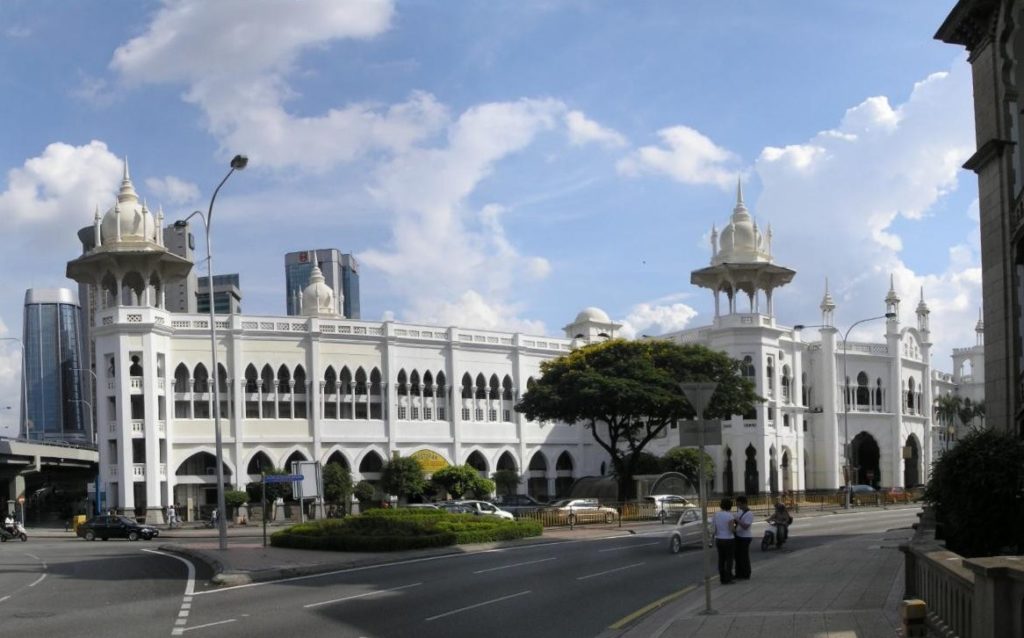
Kuala Lumpur Railway Station
Entrance to the mosque is free, though donations for its upkeep are welcomed. If, in the tropical heat, you’re insufficiently covered up, clothes are available to help you meet the dress code. My wife ended up in a red jilbab, which drew comparisons to The Handmaid’s Tale when she posted pictures on Facebook.
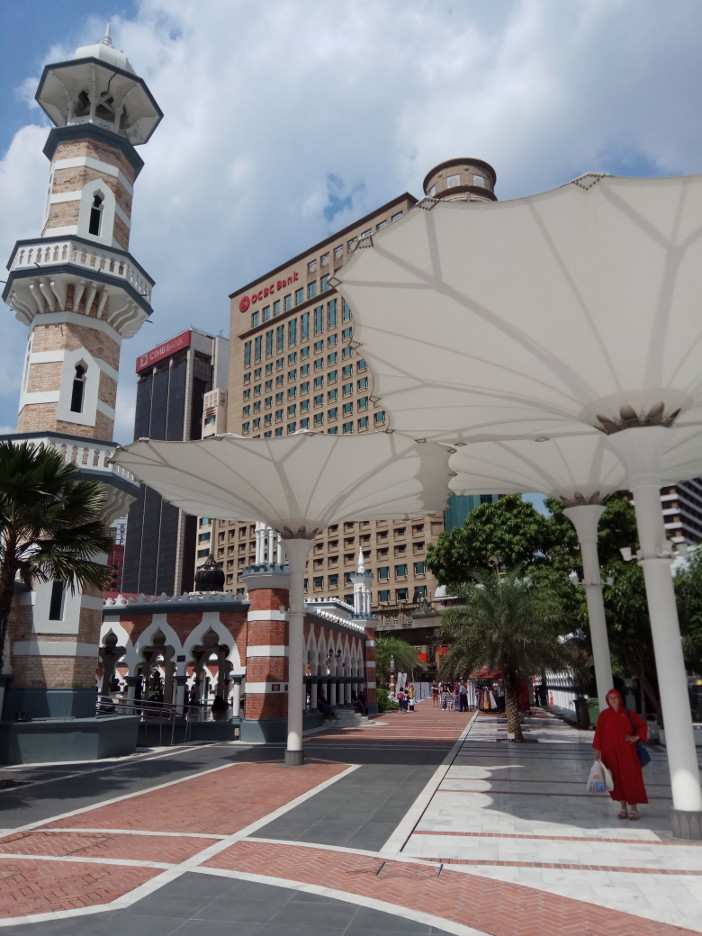
A guide offered to show us around, and pointed out that the building was not in the local style, but is modeled after the Mughal mosques of Northern India which the British colonialists were more familiar with. I was expecting the guide to ask for a tip, but I had misread the situation; the guides are simply proud of their mosque, and enjoy showing it off to visitors.
The Masjid Jamek was Malaysia’s national mosque until 1965, when the Masjid Negara was opened. The new building, opposite the railway station, blends tradition and modernity in its architecture, in a bold statement of the confidence of the newly independent Malaysia. Its plazas and fountains offer a cool, calm relief from the bustle of KL.
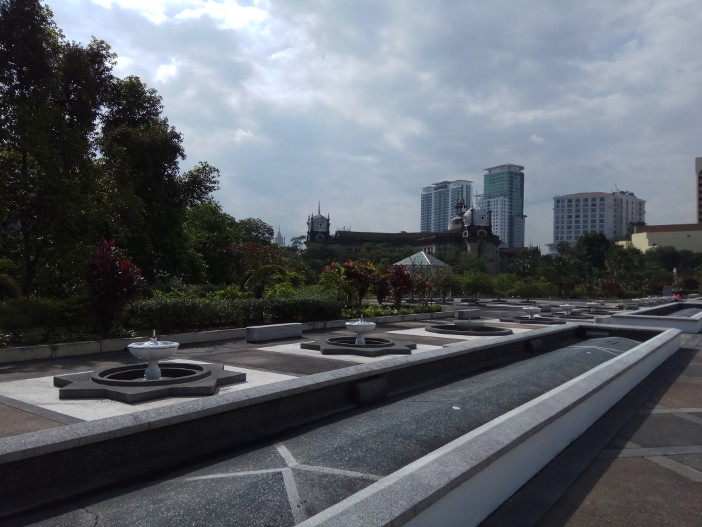
Up the hill past the Masjid Negara are a number of public buildings, including the Museum of Islamic Art. This costs a modest 14 ringgits for adults (RMB 3.5) and 7 for children, and boasts an impressive collection of art from all around the Islamic world. There are models of famous mosques, showing how their construction varies across time and cultures; we were pleased to find the Great Mosque of Xi’an, which we’ve visited in real life. Among the many displays are pottery from China, traditional clothing from Central Asia, and early Qurans from Arabia. I was particularly fascinated by the ancient Persian maps and books about medicine.
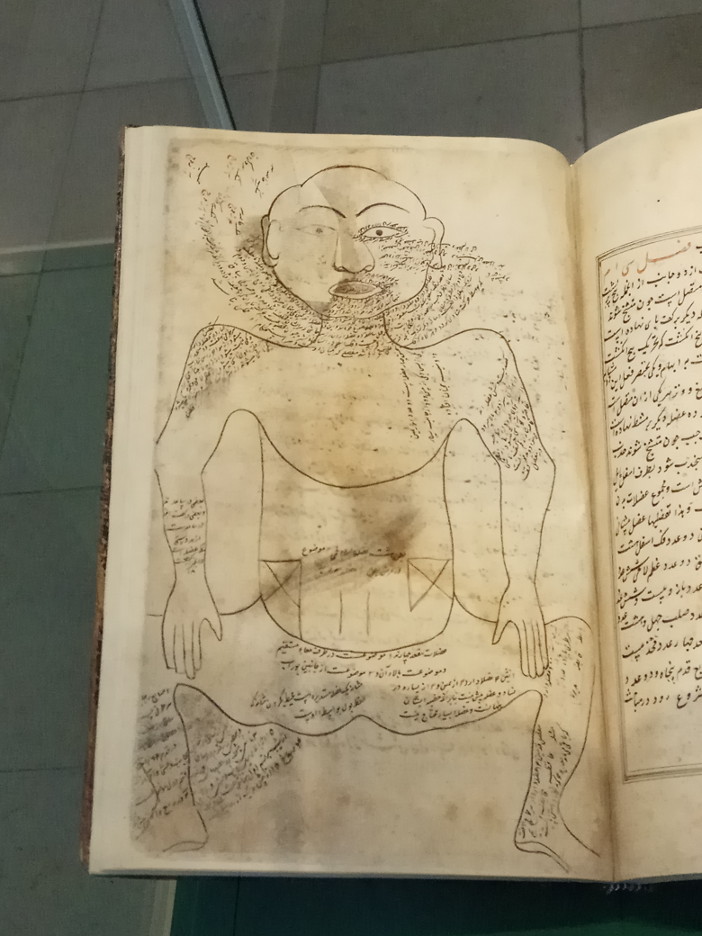
A medieval book of medicine, at KL’s Museum of Islamic Art
My children, though they are accustomed to being dragged around museums and temples, were beginning to find so much culture in one day a little wearing. They brightened up when we found the weapons and armor on display: swords, chainmail, bows, and early guns. They know now the difference between flintlock and matchlock muskets, and were pleased to learn that the British-made guns almost certainly came from our hometown of Birmingham. However, in the end, I had to promise them that the next day we’d do something that interested them, and check out the local wildlife.
Photos: CEphoto, Uwe Aranas via Wikimedia Commons, Andrew Killeen, Gryffindor via Wikimedia Commons


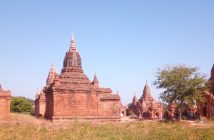
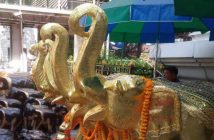

1 Comment
Pingback: Jamek Mosque - Visit Kuala Lumpur